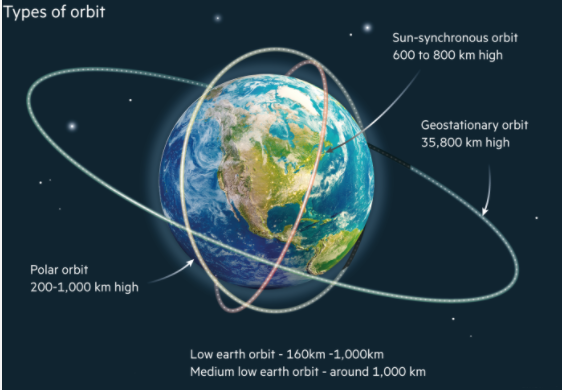Polar Orbit:
-
A polar orbit travels north-south over the poles and takes approximately 90 minutes for a full rotation.
-
These orbits have an inclination near 90 degrees. This allows the satellite to see virtually every part of the Earth as the Earth rotates underneath it.
-
These satellites have many uses such as monitoring crops, global security, measuring ozone concentrations in the stratosphere or measuring temperatures in the atmosphere.
-
Almost all the satellites that are in a polar orbit are at lower altitudes.
-
An orbit is called sun-synchronous when the angle between the line joining the centre of the Earth and the satellite and the Sun is constant throughout the orbit.
-
These orbits are also referred to as “Low Earth Orbit (LEO)” which enables the onboard camera to take images of the earth under the same sun-illumination conditions during each of the repeated visits, thus making the satellite useful for earth resources monitoring.
-
It passes over any given point on Earth’s surface at the same local solar time.
